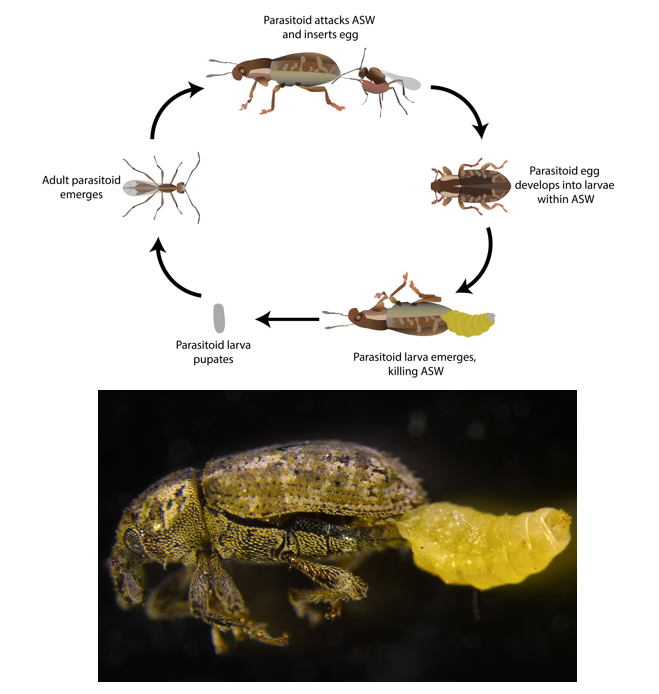Biocontrol blues: Did a virus sabotage the control of one of our most damaging pasture pests?

Biocontrol offers several advantages over pesticides when it comes to combating invasive pests – when it works! Dr Sarah Inwood from Ōtākou Whakaihu Waka the University of Otago is investigating what caused a recent biocontrol failure and how to improve our chances of future success
Published on 7 Whiringa-ā-rangi November 2024
Invasive insect pests represent a significant threat to Aotearoa New Zealand’s natural environment and agricultural industry, costing around $2 billion a year in pasture damage. As increasing numbers of insecticides are banned due to their negative environmental impacts, biocontrol – using natural enemies to target pests – has become a popular alternative. Although it is more sustainable and environmentally friendly, biocontrol can be unpredictable, failing for reasons that we can’t fully explain.
Dr Inwood and her team have received a Marsden Fund Fast-Start grant to investigate the failure of biocontrol to combat the Argentine stem weevil, one of our most significant pasture pests. A parasitic wasp species was introduced to Aotearoa in 1990 to control this species by parasitising adult weevils. These wasps were initially effective at bringing weevil numbers down, but over time, have become much less effective. Dr Inwood and her team recently discovered that the wasps in Aotearoa are infected by an undescribed virus, closely related to viruses that impact wasp behaviour. To determine if the virus might be linked to declining rates of parasitism, the team will compare historical and modern wasp samples to track virus spread and test its effects on wasp behaviour.
Revealing whether and how this virus impacts host wasps may allow us to regain control over populations of the Argentine stem weevil, saving the agricultural sector millions. More generally, this research should encourage safer and more effective design of biocontrol strategies that take hitch-hiking viruses and microbes into account.

A summary of the parasitic wasp's life cycle and an image of a wasp larva emerging from the back of an adult Argentine stem weevil (figure credit: Peter Dearden, photo supplied)
